#The Juniper Tree
Text

#look ma I made a meme#fairy tales#mythology#otgw#annihilation#cinderella#the juniper tree#apollo and daphne#dante's inferno#the old woman in the wood#Phyllis and Demophon
109 notes
·
View notes
Text
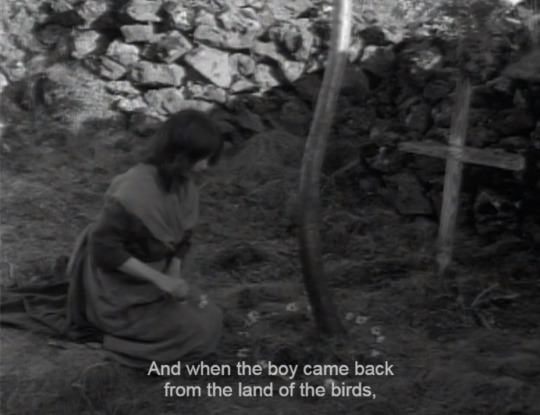
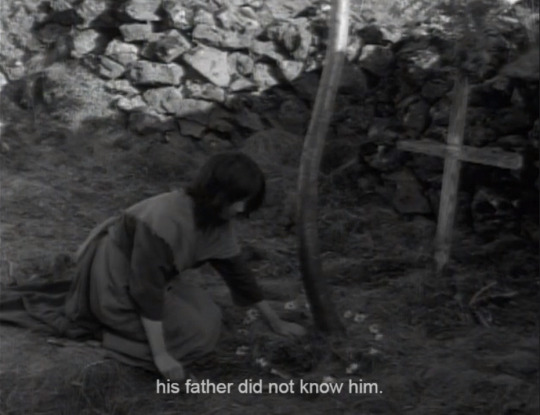
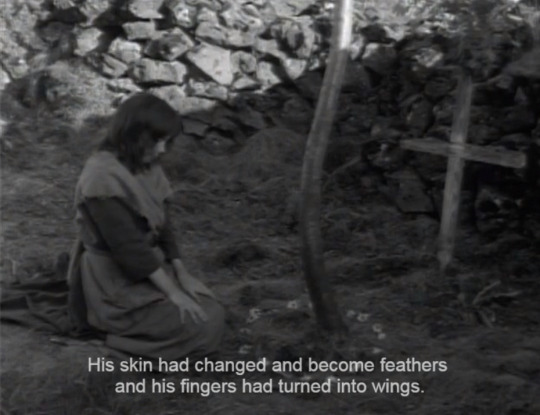

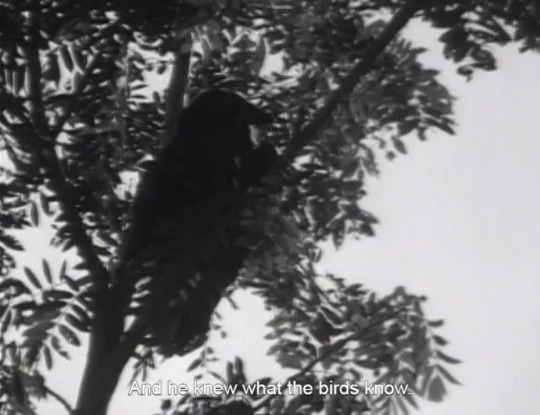
The Juniper Tree, dir. Nietzchka Keene, 1990
#the juniper tree#Einitréð#nietzchka keene#björk#björk guðmundsdóttir#icelandic cinema#what the birds know
147 notes
·
View notes
Text
Some scholarly notes about the Grimm fairytales (1)
Recently in France (well... for the last two dozen years), the publishing house José Corti has been specializing itself in scientific fairytales collections. While for the study of literary fairytales one would go towards Honoré Champion, when it comes to folktales and fairytales it is José Corti one must check. In their "Merveilleux" collection they have been publishing for the very first time in France or republishing out-of-prints collections of various European fairytales (from Denmark, Spain, Romania, and more) - with a few classics of the "literary" fairytales that marked deeply the evolution of the genre (such as Straparola's Facetious Nights or Ludwig Bechstein's fairytales).
All of that to say, José Corti has in 2009 published the most recent scientific (but for an all-public) edition of the brothers Grimm fairytales. The full collection of their fairytales, translated accurately in French, with annotations about their type/classification, their evolution throughout editions and their predecessors. I can't share all of these annotations with you, of course, but I can share a handful of them, about the most famous stories of the Grimm. They all come from the same person who translated the story in this edition: Natacha Rimasson-Fertin. (Of course my notes might be incomplete but hey, you'll have to buy the books to see the whole thing :p Or check them out at your local library)

The devil with three golden hairs (Der Teufel mit den dre goldenen Haaren)
This story is at the crossroa between the Aa-Th 461 "Three hair from the devil's beard" ; the AT 460B "The quest for fortune" and the AT 93à "Urie's letter/The prophecy".
In the 1812 edition, there were two different versions of this tale. Story number 29 "The story of the devil with three golden hair", told by Amalia Hassenpflug, and number 75, "The phenix", told by her sister Mary. In the second version the devil was replaced by a phoenix, and the hero had to get three feathers. In the 1819 edition the two stories disappeared and were replaced by the version we know today, told by Dorothea Viehmann. Another version that the Grimms had collected in 1812 had a princess falling in love with the woodsman that cuts a tree below her window.
The final episode, where the hero asks three questions to the devil through the old woman, echoes the Pentamerone's "The Seven Doves". Other versions of this story include Asbjörnsen-Moe's "The wealthy Peter Krämer", and Afanassiev's "Marco the Wealthy and Vassili the Unfortunate". The story of the brothers Grimm gathers several references to the Bible: the child throw in the water echoes Moses' abandonment, the letter meant to kill the hero is similar to the one David uses to kill Urie, finally the hair as holders of a being's wisdom and strength is linked to the legend of Samson and Dalila. But many other elements of the story evoke older faiths. The idea of a body of water as the frontier with the Otherworld can be found in the Classical Antiquity with the Greek Charon, and is found in other stories of the volume, such as "Frau Holle" and "The Iron Stove" - it as believed that water formed an obstacle spirits could not cross. The hero's mission recalls a tale of Saxo Grammaticus where Thorkill enters Utgard (the realm of supernatural beings) to steal a hair from the beard of Utgard-loki. The brothers Grimm had noted that the belief in the exceptional fate of a child born with a "hood" was also found in Iceland, where the "caul", called Glückshaut (skin of luck) was the home of a genie that would follow the child all of his life. And indeed, modern research has proven that the name given to this caul, the "fyljia" was also the name of a spiritual double, a tutlar spirit tied to a person or a family. This is why the tradition was to preserve and hide this "pileus naturalis" - in Belgium, it was called a "hem" and its color allowed for divination rituals about the child's future.
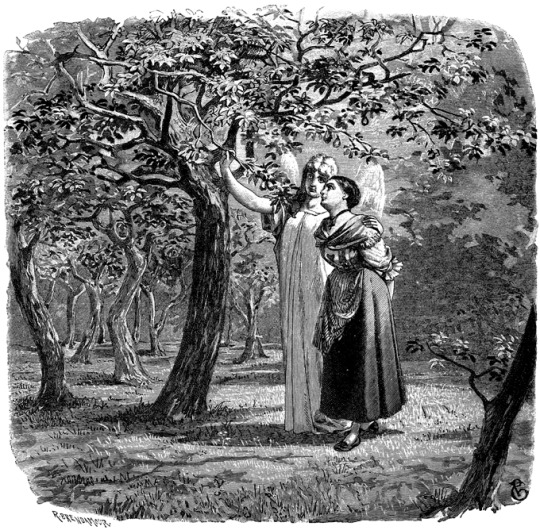
The girl without hands (Das Mädchen ohne Hände)
This fairytale is actually a cross between the AT type 706 "The maiden without hands" and the AT 930 "Urie's letter/The prophecy". The story was created by the brothers mixing two versions from Hesse, one told by Mary Hassenpflug, the other by Dorothea Viehmann. The second version lacks this story's introduction and begins with a father trying to marry his own daughter - when she refuses, he cuts off her hands and breasts, and chases her out of his house. It then follows the story. Meanwhile, the first version differs when the heroine is with her child in the forest: an old man tells her to hug three time a tree with her arms, which makes her hands grow again. He also tells her to only open the door of her house to one who will ask to enter "for the love of God" three times in a row - the king will be forced to do this before entering.
Outside of these two main versions, the brothers Grimm collected three additional ones. In the first, the angel that guides the girl is replaced by a small light that descends from the sky ; and the hands of the girl grow back when she plunges her arms in a stream after seeing a blind mouse enter its water to regain its sight. In the second version, a man is upset at his little girl praying for him day and night, but since she refuses to stop despite his demands, he cuts off her tongue. But she prays in thought and makes the sign of the cross, so he cuts off her right hand, then her arm all the way to the elbow, before banishing her. She is saved by a hunter that hides her in his master's domain and feeds her in secret with his master's dogs. When the master discovers this, he decides to raise the girl as his own child. One day she gives money to a poor man, who tells her she will regain her arm and tongue if she goes to drink of a certain stream, and he gives her a magical staff to protect her. When she returns at the lord's house, he marries her. The third version is about a queen banished by her husband with her two children, and is identical to the legend of saint Helen.
Other international versions of the tale include Zingerle's "The pretty daughter of the innkeeper", Basile's "Penta the one-armed girl" and Afanassiev's "The young girl without hands". There are some versions where it is a man that is mutlated, such as Afanassiev's "The brave without legs and the blind brave". The roots of this story date back to the end of the 12th century, and are located in southern England - this tale was the subject of numerous literary adaptations, the most famous being the verse romance of the 13th century "The Beautiful Helen of Constantinople".
The motif of the child sold to the devil is recurring among the Grimm fairytales - even though the character of the devil can be replaced by another supernatural being, such as in "Rapunzel" or "The Nixie of the Mill-Pond". The idea of offering the first thing one sees upon returning home is as old as the Ancient Testament (Judges). This story bears the signs of a heavy Christianiation, and was clearly inspired by the legend of Saint Genevieve of Brabant, falsefely accused of being unfaithful and condemned to death with her newborn child. The executioners take pity on her and she lives alone in the woods for seven years. As with other tales from the Grimm collection, this story mixes the Christian fantasy (the hands that regrow are treated as a Christian miracle) with pagan fantasy (there are several elements of folk-magic, such as the circle the girl draws around her to be protected from the devil, or the accusations of the queen giving birth to a changeling - a changeling also appears in the third story of "The Elves", KHM 39).

The Robber Bridegroom (Der Räuberbräutigam)
This story belongs to the fairytale type Aa-Th 955, named after it: "The robber bridegroom".
The tale was told to Jacob Grimm by Mary Hassenpflug, and was present as early as the 1810 manuscript. However this first version, that the brothers deemed "incomplete" was replaced from the 1812 edition onward by a new version which mixed two versions from Lower-Hesse. The brothers noted the existence of another version where the robber indicated the road to his house to a princess, by tying ribbons around the trees.
Ludwig Bechstein took inspiration from the brothers Grimm's tale to create his own "The Robber Bridegroom". This fairytale, like "Fichter's Bird", belongs to the "Bluebeard cycle" (several tales that the brothers removed from their first edition also belonged to this cycle).
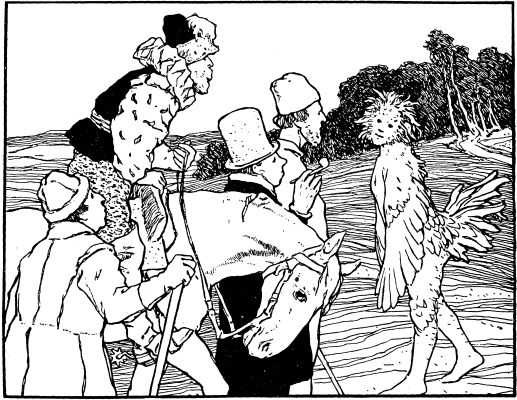
Fitcher's Bird (Fitchers Vogel)
This tale is a variation of the Aa-Th 311 "The heroine rescues herself and her sisters", usually classified under the "Bluebeard" category.
The final text of the Grimms is actually a mix of two different versions of the same story that was told to the brothers by both Friedrike Mannel and Dortchen Wild. The Grimms noted the existence of a version from Hanovre which goes as follow: a poor woodcutter asks his daughter to bring him his meal in the forest, and to show them the way he places peas on the floor. However dwarves notice this, and change the emplacement of the pea so that their path leads to their grotto. The older girl follows the peas, and become the dwarves' slave. Then we have the Bluebeard "forbidden room" motif, and the story goes as the "Fitcher's Bird" goes, as the dwarves lure the two other sisters to their cave. The last sister sticks the feathers on her body by rolling herself in blood (presumably the blood of the dwarves' victims), and there is no resurrection of the sisters. Everybody that meets her on the way call her "geputzter Vogel". The dwarves hunt the girl down and almost catch her just as she reaches her father's house - she is so fast in closing the door that it cuts a piece of her heel. The Grimms also knew of a Dutch version of the story, translated in German, and that was identical to one of their first-editions tales, "The Murder-Castle".
The translation of the name of the "bird" always caused many problems, due to the difficulty of understanding the expression. The brothers Grimm themselves explained the name of the bird by the Icelandic "Fitfuglar", meaning "birds that swim" - as such, the girl would be called "Fitchers-Vogel" because she looks like a swan". However, other people do not agree with this etymology, some linking Fitcher with "Fitze", the thread. Rimasson-Fertin highlights that the expression "Fitchers Fitze", outside of a simple sonority game, might be two variations of the male name Fritz (the diminutive of Friedrich) - other usual diminutives were Fitze, Fitz and Fiete. The brothers Grimm noted that the motif of the blood that cannot be erased was much older than Perrault's Bluebeard - it could be found as early as the "Gesta Romanorum", where a mother who had murdered her child couldn't erase three blood-drops from her hand, forcing her to wear a glove. This story must be compared to the KHM 40, "The Robber Bridegroom".

The Juniper Tree (Von dem Machandelboom)
It is the AaTh 720 "My mother killed me, my father ate me".
Just like the tale of "The Fisherman and his wife", this story was written by the painter P. O. Runge, and the brothers Grimm used it as a model for how they should present their own fairy tales. In fact, we can note sentences almost identical between the two tales.
The brothers noted a variation of the story where the stepmother places her daughter near the pot where her brother cooks, and she forbids her from looking inside. But since the pot boils too much, the girl lifts the lid - then her brother's hand reaches out to her from the cauldron. There is yet another version noted by the Grimm where there are three children, not two, and the stepmother sends them pick up strawberries in the wood, promising an apple to whoever comes back first.
The cruelty of this fairytale earned the brothers a serious criticism from Achim von Arnim - who only tolerated such violence because it echoed the one present in Goethe's Faust. The description "red as blood, white as snow" of course echoes the tale of "Snow-White". The brothers Grimm mentionned in their notes that the juniper tree was a plant believed to have the power to bring back youth - and Rölleke noted that the juniper-tree's red berries were used in folk-magic. It seems to be a very ancient tale due to several very old motifs such as the soul returning in the shape of a bird, a resurrection out of bones, and cannibalism. This tale must be compared to "Brother Lustig", "The Singing Bone" and, of course, "The Fisherman and his wife".

Briar Rose (Dornröschen)
Of course, it is the AaTh 410 "Sleeping Beauty".
This fairytale was present as early as the 1810 manuscript, written by Jacob Grimm from a tale told by Marie Hassenpflug. Research has proven that this story is derived from Charles Perrault's own Sleeping Beauty. We also find back in the German story a motif coming from another famous French literary fairytale, madame d'Aulnoy's "The Hind in the Woods/The Doe in the Woods" (also known as the White Doe). In this story a Crayfish/Lobster fairy announces to the queen she will have a child, and later the same fairy curses the princess as she is born - and what a coincidence! In the first edition of "Briar Rose", the animal that announces the princess' birth is not a frog... but a crayfish. Proving that there is a direct link. As for the name of the princess n German, "Dornröschen", "small briar rose", it actually first appeared in the German translation of a 1730 fairytale by Anthony Hamilton (an Irish man who however spoke and wrote French), "Fleur d'épine" (Thorn flower/Briar flower) - it had been translated in 1790. Bolte and Polivka have also noted a comedy by Gryphius from 1660 whch was named "Die geliebte Dornrose", "The beloved briar rose".
In their notes about the fairytale, the Grimm brothers explicitely compare Briar Rose to the legend of Brunhild asleep behind a wall of fire, cursed into a magical slumber by Odin's "sleep-thorn" and woken up by Sigurd, the only one able to cross the wall of flames. The brothers Grimm were also aware of Basile's version of the story, "Thalia, Sun and Moon", which they compared to their own Briar Rose in their notes. The brothers were very fascinated by the consistant naming of the princess' children from Perrault (Dawn, Day) to Basile (Sun, Moon) and compared it to the occurences of "Day, Sun and Moon" as names within the Eddas. However we know that Perrault was heavily inspired by Basile's story when writing his own Sleeping Beauty, and only modified some parts so as to erase the more shocking and "unpleasant" parts (such as the married prince having sex with the sleeping girl). Of course, this story is also to be compared with the 14th century medieval tale of the Roman de Perceforest.
The wise women that appear in this story are the Germanic equivalent of the fairies. In fact, we know that the brothers Grimm carefully avoided (or erased) any mention of "Fee" (the German word for the English "fairy" and French "fée") from their tales, so as to better differentiate them from the French "fairy tales", "contes de fées". By turning the fairies into wise women making predictions at the child's birth, the Grimms notably opened an entire set of symbolism and interpretations linking them to the mythological figures of the Norns, Parcae and Moirai.
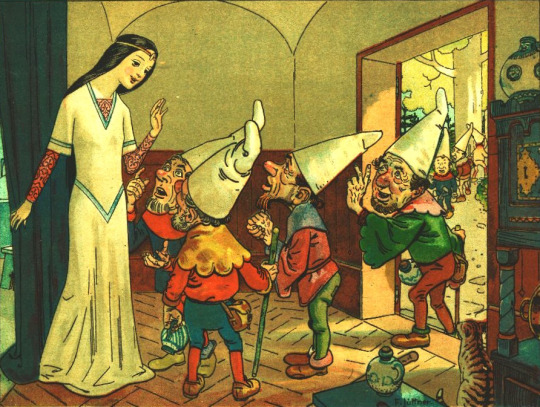
Snow White (Schneewittchen)
Of course, it is the AaTh 709 "Snow-White".
The full editing history of this tale was only "recently" recreated (the book was published in 2009, it was recent back then) in its entirety. We know that it begins in 1808 with a version collected by Ferdinand Grimm, brother of Jacob and Wilhelm, called "Schneeweibchen". It seems Ferdinand might have invented the story on his own. Wilhelm and Jacob then slowly modified it, by adding details from other collected versions, before publishing it in their first edition in 1810 (they did note at the time that it was a Lower-Germany story, and that in Upper-Germany the tale did exist but with the deformed name of "Schliwitchen". When the Grimms did their second edition, the main change they performed onto this story was the modification of the wicked mother into a wicked stepmother - something they also did for "Hansel and Gretel". In fact, from edition to edition the Grimms kept adding adjectives and expressons highlighting the opposition between the girl and the vain queen.
Th Grimms had collected several variations of the tale. One was much closer to the tale of "The Juniper Tree" and in it the queen, as she was with the king on a hunting sled, cut her finger while peeling an apple. In another variation the king and queen were walking by three mounts of snow, than went by three pools of blood, and finally saw three ravens in the sky, and each time the king wishes for a girl with the corresponding colors - soon afterward the couple encountered a little girl fitting this description. The king, immediately attached to her, takes her with him in their royal carriage, but the queen immediately hates her and tries to get rid of her - so she asks the girl to go seek a glove she threw out of the window, and while she is out of the carriage she asks the driver to leave as fast as he can. Then the little girl takes refuge at the seven dwarves' house.
The fairytale existed in German literature before the brothers Grimm published it. Indeed J. A. Musaüs had published in 1782 a fairytale called "Richilde" - and the Grimm were influenced by this tale, since in the margins of their first edition, they noted about Snow-White "It is Musaüs' Richilde". There was also a Snow-White story that had been published in 1809 in a fairytale book by A. L. Grimm (no relationship to the brothers Grimm). The Brothers Grimm did note the striking similarity between this story and the Norse pseudo-historical legend of Snäsridr, the beautiful wife of "Harald with fair hair", a wife that, when she died, stayed in her prime state so that it seemed she was still alive.
This fairy-tale has a very wide area of spreading, as it can be found from Ireland to Turkey passing by central Africa. It is especially present in the literary Italian compilations of fairytales. Basile has three variations of the story in his Pentamerone: "The raven", "Nennillo and Nennella" as well as "The she-cook".
The various virtues that Snow-White shows in this tale made her one of the big role models within the education of bourgeoisie girls in the 19th century - alongside Cinderella, of course. In fact, according to H-J Uther's analysis of the story, it is because of all her virtues that Snow-White's beauty does not fade away and stays undamaged even in death, unlike her wicked stepmother whose vices causes the fading of her charms. Finally, this fairytale is actually the proof that the brothers Grimm did not simply listed their fairytales one after the other in a random order, but deliberately created "bridges" and internal references to create a cohesive world within their book. Indeed, the mention of the snowflakes looking like feathers references "Frau Holle", while the glass coffin can be found back in, of course, "The Glass Coffin", and the blood-drops on the snow evokes "The Juniper Tree".
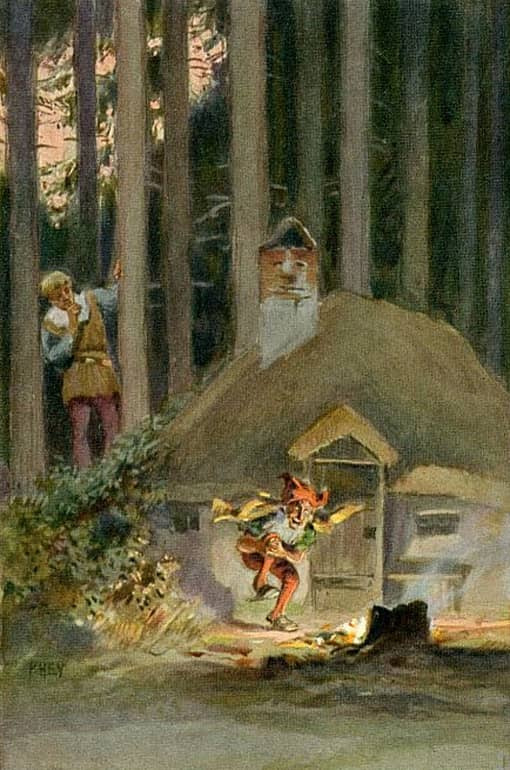
Rumpelstilzchen
Yes this story is the famous "Rumpelstilskin" (or Rumpelstiltskin? I never know how to write it in English). But why keep the German spelling? Because Rimasson-Fertin has some stuff to say about it: this name is the diminutive form of "Rumpelstilz", a term that Jacob Grimm defined in his "German Dictionary" as being synonymous with "poltergeist" (he noted a similarity between Poltergeist and Rumpelgeist, both designated a very loud spirit). While today "poltergeist" is mostly associated with ghosts, in a much broader way it designate a dwarf, a dead or a devil - or just any kind of phenomenon caused by witchcraft.
This story corresponds to the AaTh 500 "The name of the supernatural being". This fairytale has an interesting evolution history... Jacob Grimm had a version of it as early as 1808, named "Rumpenstünzchen", which was then slightly modified for the 1810 manuscript. This tale was actually the mix of two different versions - and one of these versions had a different ending. The queen didn't sent messengers searching for the dwarf's name, rather the king spotted the little man while returning from hunting on the third day. The Grimm also noted a variation where the initial situation was reversed: a young girl who had to spin hemp but could only manage to spin gold much to everybody's despair, and a small man appeared to promise her a wedding to a king's son in exchange for her firstborn child. It ended in such a way: the queen herself spotted the small man singing his name, jumping around a fire while riding a ladle like a horse. When she guessed his name, he flew out of the window and into the sky, riding the ladle like a witch's broom. We know that the episode of the spinning of the straw was only added by the Grimm in 1812 (it is not in the 1810 version), and that the final scene of the dwarf self-mutilating comes from a story of Lisette Wild and was added in 1819.
The first literary record of this story is a French fairytale published in 1705 and written by Mlle Marie-Jeanne L'Héritier de Villandon. It was "L'Histoire de Ricdin-Ricdon" (The Tale of Ricdin-Ricdon), published in her "La Tour ténébreuse et les jours lumineux" (The Shadowy tower and the luminous days). It had been translated in German by Johann Gottwert Müller in 1790, under the title "Straubfedern", "Ostrich feathers". As for the name "Rumpelstilzchen", it actually originates from Johann Fischart's Grman adaptation of the French "Gargantua", "Geschichtklitterung" (1584) - in it, Fischart lists various children game by name, and mentions a "Rumpele stilt oder der Poppart".
This fairytale type is very present in Western, Central and Northern Europe (British Isles and Ireland included), with also a few spottings in the Baltic countries, China and Japan. The name of the supernatural being always changes from one region or country to the next (in Swiss it is Hans-Öfeli, in Dutch Trillevip, in Swedish Titteliture, in Finnish Tuttirituli, in the Suffolk it is Tom Tit Tot, in Welsh Gnarwynathrot, in Irish it is Eve-Trot or Trit-a-Trot...). It is part of the enormous success of this tale-type: every country has to invent its own brand of nonsensical, un-guessable name. As for the rhymed song through which the dwarf betrays its name, it is found in England as "Nimmy nimmy not / My name is Tom Tit Tot", and in an Afro-American version of North Carolina "I'm so glad that she do not know / That my name is Tabutoe Tambutoe".
The brothers Grimm noted that in Germanic mythology it was typical for underground beings (aka dwarfs) to have names that are not usual among humankind, which is why, again according to them, the dwarf of this story would feel in perfect safety proposing the queen such a game. The rule according to which obtaining the name of a supernatural being means gaining a form of power over them is very common, and is even reused in another one of the Grimm stories: KHM 136, "Iron John". H. Rölleke did an analysis of the names the queen proposes at first: we have the three names of the Magi, aka the Three Wise Men, or King-Magi, which gives a Christian setting to the story, and could also serve as a metonymy for all the saint names found in the Christian calendar. As for "Heinz" and "Kunz", Rölleke sees in them the diminutives of the names of the medieval emperors Heinrich and Konrad, which used to be some of the most popular male names among German-speaking countries.

All-Kinds-of-Fur (Allerleirauh)
It corresponds to the AaTh 510B "The dresses of gold, silver and stars", also known as "Donkey Skin", after the famous Charles Perrault fairytales.
The story we read today was the one told to the Grimm by Dortchen Wild, but there was a variation of it told to the brothers by Jeannette Hassenpflug, "Princess Mouse-Skin", which was present in the 1812's edition of the volume (n°71) but was then moves to the annotations as a mere mention. The version of the story from the first draft (the 1810 manuscript) was called "Allerlei Rauch", "All Kinds of Smoke", and was heavily inspired by one of the tales present within the novel "Schilly" by Carl Nehrlich.
The line "God forbade a father from marrying his daughter. Nothing good can come from this sin which will cause the kingdom's decadence" was added in the 1819 edition, and references a tale of Albert Ludwig Grimm called "Brunnenhold und Brunnenstark". The brothers Grimm insisted even more on the condamnation of the sin of incest when rewriting the story for their "small collection" for kids, and also insisted heavily upon a political extension of such a decision, which would damage the state itself. It is actually an allussion to the failure of the Frankfort Parliament, which had been gathered in 1848 at the Paulskirche in an attempt to create a constitution for all of Germany - to which Jacob Grimm had taken part.
A variation of the story collected in Paderborn has the last coat made of all the furs of the kingdom, plus moss and various forest-related material. In this version, the heroine puts the cloak on top of her three beautiful dresses before fleeing, and she hides in an empty tree where she is discovered, not during a hunting party, but by woodsman that cut off the tree she was sleeping into, to bring wood to the king. All-Kinds-of-Fur works in the castle's kitchen but one day as she is preparing the soup, the king has her sit on his chair so she can delouse him (a motif also present in "The Devil with Three Golden Hair). As she does, the king glimpses the beautiful shining dress under the cloak's sleeve, and this is how he discovers the girl's true appearance. Another variation of the story yet, also collected in Paderborn, has the heroine pretending to be mute. One day the king hits her with a whip, it rips apart the coat, revealing the golden dress underneath.
Not all the German versions of the story include the incest motif. In Musaüs' take on the story, "Die Nymphe des Brunnens", "The Nymph of the Well", the heroine leaves her father's castle because it has been destroyed. Her godmother, an undine, gifts her a small magical box and when she leaves the ball she says "Night behind me and day before me / Might nobody see me!". As for the version of Hassenpflug, "Princess Mouse-Skin", it begins as the KHM 179, "The Goose-Girl at the Well": a king wants to know which of his three daughters love him the most, the first says she loves him more than the whole kingdom, the second more than pearls and precious stones, the third more than salt. The furious father has the last princess be sent into the woods to be killed, but the servant tasked with the execution spares her out of pity, and gives her, by her request, a coat made of mice skin. The rest of the story goes like within "All-Kinds-of-Fur", except for the final wedding, to which the father-king is invited. All the dishes served to him are without salt, and he ends up saying he prefers to die rather than continue eating without salt. The princess-daughter reveals herself and points out how he tried to had her killed for loving him more than salt. Her father begs her for forgiveness, and the tale ends with her accepting.
The motif of the incest can, however, be found back in a variation of the KHM 31 (The Girl Without Hands) that the Grimms collected, and where the father mutilates the daughter for refusing to marry him. The motif of the king trying to marry his own daughter has been attested in many, many European stories ever since the 12th century. As for the boots that are thrown in the heroine's face in the Grimm story, while in the final edition it has no follow-up, in the 1812 edition it was a recurring element forming a motif within the tale. Another German version of the story that preserved this structure that the Grimms erased is the story collected by Vernaleken, "Throw-Broom, Throw-Brush and Throw-Comb". In it the king throws out of anger at the face of the heroine (Adelaide) a broom, a brush and a comb. Every time she goes to the ball, she changes her pseudonym to fit which item hit her (one night she is "Throw-Broom", another she is "Throw-Brush", etc...). There are many, many variations of the story containing such a "name play".
Other famous examples of this variation, outside of Charles Perrault's Donkeyskin, include Straparola's "The maiden in the chest", Basile's "The She-Bear", Afanassiev's "Pig-Skin".
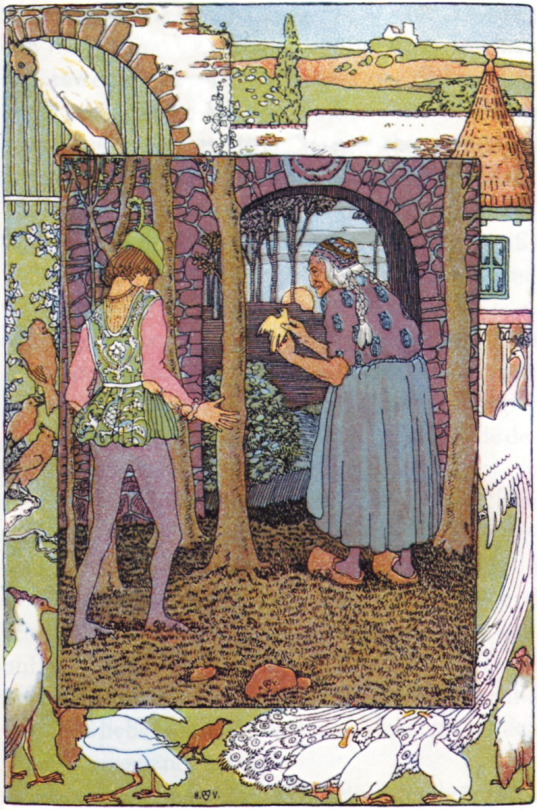
Jorinde and Joringel (Jorinde und Joringel)
It corresponds to the AaTH 405, named and created after this story, "Jorinde and Joringel".
The interesting thing with this story is that the brothers Grimm did not collect it from a direct source. Rather they lifted it, to the exact word, from the autobiography of Johann Heinrich Jung, "Jugend/Youth", published in 1779. The brothers deemed that the way Jung-Stilling had written the tale was the "perfect" way to tell the story, according to their definition of a fairytale. Though they did note the existence of a version of the story told in Schwalm - but which differs very little from the story of Jung-Stilling.
The brothers Grimm themselves noted a similarity between this story, and the KHM 123, "The Old Woman in the Wood". Rimasson-Fertin notes that the witch in this story is to be compared to the ones appearing in "Hansel and Gretel" and in "Little Brother and Little Sister". As for the name of the demon the witch invokes, "Zachiel", H. Rölleke identified it as a form of "Zachariel", a demon name coming from the very popular 17th century demonology grimoire "Clavicula Salomonis", "The Clavicles of Salomon".
#brothers grimm#grimm fairytales#brothers grimm fairytales#german fairytales#sleeping beauty#briar rose#snow-white#snow white#jorinde and joringel#all kinds of fur#the juniper tree#the devil with three golden hair#the three golden hair of the devil#the robber bridegroom#the maiden without hands#the girl without hands
35 notes
·
View notes
Text

Next up! I may also try to get to Ava Reid’s A Study in Drowning this fall as well. We will see.
#books#juniper and thorn#ava reid#currently reading#fantasy horror#fairytale retelling#the juniper tree
132 notes
·
View notes
Photo


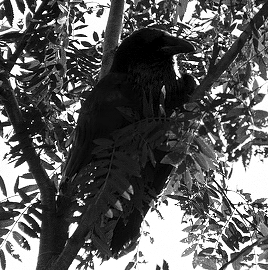
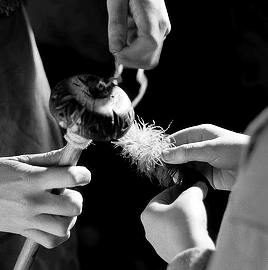

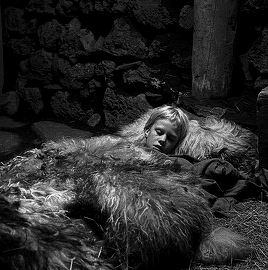

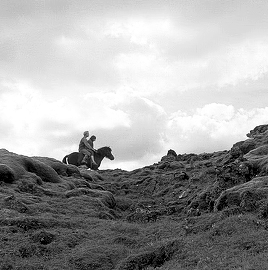
The Juniper Tree, 1990
dir. by Nietzchka Keene
#filmedit#filmgifs#worldcinemaedit#userfilm#moviegifs#fyeahmovies#cinemapix#userkraina#the juniper tree#1990s#iceland#ours#gifs#by teka#body horror tw
706 notes
·
View notes
Photo
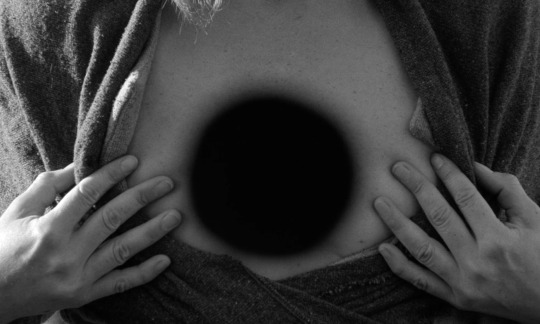
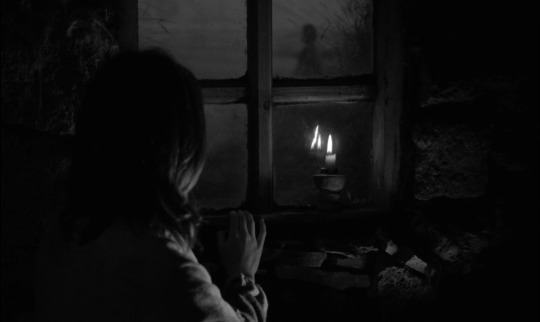
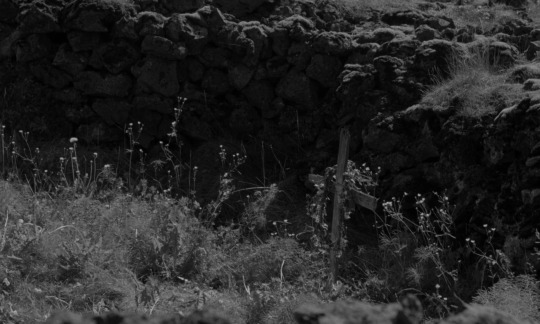


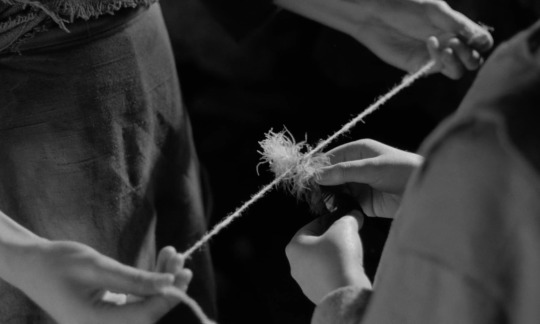
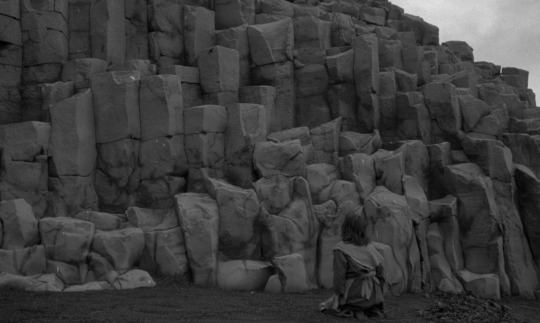
The Juniper Tree (1990)
dir. Nietzchka Keene
#the juniper tree#filmedit#nietzchka keene#bjork#bryndis petra bragadóttir#valdimar örn flygenring#cinematography#black and white#films#movies#faceless
422 notes
·
View notes
Note
Which fairy tale do you think is the most fucked up?
I forget what it's called, but the one where the kid gets murdered by his (step?)mom and then she tricks her little kid daughter into thinking she killed him. Then he comes back to life as a bird and gives his sister some new shoes and I forget what he got for his dad and I'm pretty sure he dropped a millstone on his mom lol.
Edit:
I was adding in the paragraph breaks but I'm too lazy to do that on my phone so sorry
Okay I just remembered I can put read more as on my phone
The Juniper Tree
Some two thousand years or so, there lived a rich man with a good and beautiful wife. They loved each other dearly, but sorrowed much that they had no children. So greatly did they desire to have one, that the wife prayed for it day and night, but still they remained childless.
In front of the house there was a court, in which grew a juniper-tree. One winter’s day the wife stood under the tree to peel some apples, and as she was peeling them, she cut her finger, and the blood fell on the snow. ‘Ah,’ sighed the woman heavily, ‘if I had but a child, as red as blood and as white as snow,’ and as she spoke the words, her heart grew light within her, and it seemed to her that her wish was granted, and she returned to the house feeling glad and comforted. A month passed, and the snow had all disappeared; then another month went by, and all the earth was green. So the months followed one another, and first the trees budded in the woods, and soon the green branches grew thickly intertwined, and then the blossoms began to fall. Once again the wife stood under the juniper-tree, and it was so full of sweet scent that her heart leaped for joy, and she was so overcome with her happiness, that she fell on her knees. Presently the fruit became round and firm, and she was glad and at peace; but when they were fully ripe she picked the berries and ate eagerly of them, and then she grew sad and ill. A little while later she called her husband, and said to him, weeping. ‘If I die, bury me under the juniper-tree.’ Then she felt comforted and happy again, and before another month had passed she had a little child, and when she saw that it was as white as snow and as red as blood, her joy was so great that she died.
Her husband buried her under the juniper-tree, and wept bitterly for her. By degrees, however, his sorrow grew less, and although at times he still grieved over his loss, he was able to go about as usual, and later on he married again.
He now had a little daughter born to him; the child of his first wife was a boy, who was as red as blood and as white as snow. The mother loved her daughter very much, and when she looked at her and then looked at the boy, it pierced her heart to think that he would always stand in the way of her own child, and she was continually thinking how she could get the whole of the property for her. This evil thought took possession of her more and more, and made her behave very unkindly to the boy. She drove him from place to place with cuffings and buffetings, so that the poor child went about in fear, and had no peace from the time he left school to the time he went back.
One day the little daughter came running to her mother in the store-room, and said, ‘Mother, give me an apple.’ ‘Yes, my child,’ said the wife, and she gave her a beautiful apple out of the chest; the chest had a very heavy lid and a large iron lock.
‘Mother,’ said the little daughter again, ‘may not brother have one too?’ The mother was angry at this, but she answered, ‘Yes, when he comes out of school.’
Just then she looked out of the window and saw him coming, and it seemed as if an evil spirit entered into her, for she snatched the apple out of her little daughter’s hand, and said, ‘You shall not have one before your brother.’ She threw the apple into the chest and shut it to. The little boy now came in, and the evil spirit in the wife made her say kindly to him, ‘My son, will you have an apple?’ but she gave him a wicked look. ‘Mother,’ said the boy, ‘how dreadful you look! Yes, give me an apple.’ The thought came to her that she would kill him. ‘Come with me,’ she said, and she lifted up the lid of the chest; ‘take one out for yourself.’ And as he bent over to do so, the evil spirit urged her, and crash! down went the lid, and off went the little boy’s head. Then she was overwhelmed with fear at the thought of what she had done. ‘If only I can prevent anyone knowing that I did it,’ she thought. So she went upstairs to her room, and took a white handkerchief out of her top drawer; then she set the boy’s head again on his shoulders, and bound it with the handkerchief so that nothing could be seen, and placed him on a chair by the door with an apple in his hand.
Soon after this, little Marleen came up to her mother who was stirring a pot of boiling water over the fire, and said, ‘Mother, brother is sitting by the door with an apple in his hand, and he looks so pale; and when I asked him to give me the apple, he did not answer, and that frightened me.’
‘Go to him again,’ said her mother, ‘and if he does not answer, give him a box on the ear.’ So little Marleen went, and said, ‘Brother, give me that apple,’ but he did not say a word; then she gave him a box on the ear, and his head rolled off. She was so terrified at this, that she ran crying and screaming to her mother. ‘Oh!’ she said, ‘I have knocked off brother’s head,’ and then she wept and wept, and nothing would stop her.
‘What have you done!’ said her mother, ‘but no one must know about it, so you must keep silence; what is done can’t be undone; we will make him into puddings.’ And she took the little boy and cut him up, made him into puddings, and put him in the pot. But Marleen stood looking on, and wept and wept, and her tears fell into the pot, so that there was no need of salt.
Presently the father came home and sat down to his dinner; he asked, ‘Where is my son?’ The mother said nothing, but gave him a large dish of black pudding, and Marleen still wept without ceasing.
The father again asked, ‘Where is my son?’
‘Oh,’ answered the wife, ‘he is gone into the country to his mother’s great uncle; he is going to stay there some time.’
‘What has he gone there for, and he never even said goodbye to me!’
‘Well, he likes being there, and he told me he should be away quite six weeks; he is well looked after there.’
‘I feel very unhappy about it,’ said the husband, ‘in case it should not be all right, and he ought to have said goodbye to me.’
With this he went on with his dinner, and said, ‘Little Marleen, why do you weep? Brother will soon be back.’ Then he asked his wife for more pudding, and as he ate, he threw the bones under the table.
Little Marleen went upstairs and took her best silk handkerchief out of her bottom drawer, and in it she wrapped all the bones from under the table and carried them outside, and all the time she did nothing but weep. Then she laid them in the green grass under the juniper-tree, and she had no sooner done so, then all her sadness seemed to leave her, and she wept no more. And now the juniper-tree began to move, and the branches waved backwards and forwards, first away from one another, and then together again, as it might be someone clapping their hands for joy. After this a mist came round the tree, and in the midst of it there was a burning as of fire, and out of the fire there flew a beautiful bird, that rose high into the air, singing magnificently, and when it could no more be seen, the juniper-tree stood there as before, and the silk handkerchief and the bones were gone.
Little Marleen now felt as lighthearted and happy as if her brother were still alive, and she went back to the house and sat down cheerfully to the table and ate.
The bird flew away and alighted on the house of a goldsmith and began to sing:
‘My mother killed her little son;
My father grieved when I was gone;
My sister loved me best of all;
She laid her kerchief over me,
And took my bones that they might lie
Underneath the juniper-tree
Kywitt, Kywitt, what a beautiful bird am I!’
The goldsmith was in his workshop making a gold chain, when he heard the song of the bird on his roof. He thought it so beautiful that he got up and ran out, and as he crossed the threshold he lost one of his slippers. But he ran on into the middle of the street, with a slipper on one foot and a sock on the other; he still had on his apron, and still held the gold chain and the pincers in his hands, and so he stood gazing up at the bird, while the sun came shining brightly down on the street.
‘Bird,’ he said, ‘how beautifully you sing! Sing me that song again.’
‘Nay,’ said the bird, ‘I do not sing twice for nothing. Give that gold chain, and I will sing it you again.’
‘Here is the chain, take it,’ said the goldsmith. ‘Only sing me that again.’
The bird flew down and took the gold chain in his right claw, and then he alighted again in front of the goldsmith and sang:
‘My mother killed her little son; My father grieved when I was gone;
My sister loved me best of all;
She laid her kerchief over me,
And took my bones that they might lie
Underneath the juniper-tree
Kywitt, Kywitt, what a beautiful bird am I!’
Then he flew away, and settled on the roof of a shoemaker’s house and sang:
‘My mother killed her little son;
My father grieved when I was gone;
My sister loved me best of all;
She laid her kerchief over me,
And took my bones that they might lie
Underneath the juniper-tree
Kywitt, Kywitt, what a beautiful bird am I!’
The shoemaker heard him, and he jumped up and ran out in his shirt-sleeves, and stood looking up at the bird on the roof with his hand over his eyes to keep himself from being blinded by the sun.
‘Bird,’ he said, ‘how beautifully you sing!’ Then he called through the door to his wife: ‘Wife, come out; here is a bird, come and look at it and hear how beautifully it sings.’ Then he called his daughter and the children, then the apprentices, girls and boys, and they all ran up the street to look at the bird, and saw how splendid it was with its red and green feathers, and its neck like burnished gold, and eyes like two bright stars in its head.
‘Bird,’ said the shoemaker, ‘sing me that song again.’
‘Nay,’ answered the bird, ‘I do not sing twice for nothing; you must give me something.’
‘Wife,’ said the man, ‘go into the garret; on the upper shelf you will see a pair of red shoes; bring them to me.’ The wife went in and fetched the shoes.
‘There, bird,’ said the shoemaker, ‘now sing me that song again.’
The bird flew down and took the red shoes in his left claw, and then he went back to the roof and sang:
‘My mother killed her little son;
My father grieved when I was gone;
My sister loved me best of all;
She laid her kerchief over me,
And took my bones that they might lie
Underneath the juniper-tree
Kywitt, Kywitt, what a beautiful bird am I!’
When he had finished, he flew away. He had the chain in his right claw and the shoes in his left, and he flew right away to a mill, and the mill went ‘Click clack, click clack, click clack.’ Inside the mill were twenty of the miller’s men hewing a stone, and as they went ‘Hick hack, hick hack, hick hack,’ the mill went ‘Click clack, click clack, click clack.’
The bird settled on a lime-tree in front of the mill and sang:
‘My mother killed her little son;
then one of the men left off,
My father grieved when I was gone;
two more men left off and listened,
My sister loved me best of all;
then four more left off,
She laid her kerchief over me,
And took my bones that they might lie
Now there were only eight at work,
Underneath,
and now only five,
the juniper-tree.
and now only one,
Kywitt, Kywitt, what a beautiful bird am I!’
then he looked up and the last one had left off work.
‘Bird,’ he said, ‘what a beautiful song that is you sing! Let me hear it too; sing it again.’
‘Nay,’ answered the bird, ‘I do not sing twice for nothing; give me that millstone, and I will sing it again.’
‘If it belonged to me alone,’ said the man, ‘you should have it.’
‘Yes, yes,’ said the others: ‘if he will sing again, he can have it.’
The bird came down, and all the twenty millers set to and lifted up the stone with a beam; then the bird put his head through the hole and took the stone round his neck like a collar, and flew back with it to the tree and sang—
‘My mother killed her little son;
My father grieved when I was gone;
My sister loved me best of all;
She laid her kerchief over me,
And took my bones that they might lie
Underneath the juniper-tree
Kywitt, Kywitt, what a beautiful bird am I!’
And when he had finished his song, he spread his wings, and with the chain in his right claw, the shoes in his left, and the millstone round his neck, he flew right away to his father’s house.
The father, the mother, and little Marleen were having their dinner.
‘How lighthearted I feel,’ said the father, ‘so pleased and cheerful.’
‘And I,’ said the mother, ‘I feel so uneasy, as if a heavy thunderstorm were coming.’
But little Marleen sat and wept and wept.
Then the bird came flying towards the house and settled on the roof.
‘I do feel so happy,’ said the father, ‘and how beautifully the sun shines; I feel just as if I were going to see an old friend again.’
‘Ah!’ said the wife, ‘and I am so full of distress and uneasiness that my teeth chatter, and I feel as if there were a fire in my veins,’ and she tore open her dress; and all the while little Marleen sat in the corner and wept, and the plate on her knees was wet with her tears.
The bird now flew to the juniper-tree and began singing:
‘My mother killed her little son;
the mother shut her eyes and her ears, that she might see and hear nothing, but there was a roaring sound in her ears like that of a violent storm, and in her eyes a burning and flashing like lightning:
My father grieved when I was gone;
‘Look, mother,’ said the man, ‘at the beautiful bird that is singing so magnificently; and how warm and bright the sun is, and what a delicious scent of spice in the air!’
My sister loved me best of all;
then little Marleen laid her head down on her knees and sobbed.
‘I must go outside and see the bird nearer,’ said the man.
‘Ah, do not go!’ cried the wife. ‘I feel as if the whole house were in flames!’
But the man went out and looked at the bird.
She laid her kerchief over me,
And took my bones that they might lie
Underneath the juniper-tree
Kywitt, Kywitt, what a beautiful bird am I!’
With that the bird let fall the gold chain, and it fell just round the man’s neck, so that it fitted him exactly.
He went inside, and said, ‘See, what a splendid bird that is; he has given me this beautiful gold chain, and looks so beautiful himself.’
But the wife was in such fear and trouble, that she fell on the floor, and her cap fell from her head.
Then the bird began again:
‘My mother killed her little son;
‘Ah me!’ cried the wife, ‘if I were but a thousand feet beneath the earth, that I might not hear that song.’
My father grieved when I was gone;
then the woman fell down again as if dead.
My sister loved me best of all;
‘Well,’ said little Marleen, ‘I will go out too and see if the bird will give me anything.’
So she went out.
She laid her kerchief over me,
And took my bones that they might lie
and he threw down the shoes to her,
Underneath the juniper-tree Kywitt, Kywitt, what a beautiful bird am I!’
And she now felt quite happy and lighthearted; she put on the shoes and danced and jumped about in them. ‘I was so miserable,’ she said, ‘when I came out, but that has all passed away; that is indeed a splendid bird, and he has given me a pair of red shoes.’
The wife sprang up, with her hair standing out from her head like flames of fire. ‘Then I will go out too,’ she said, ‘and see if it will lighten my misery, for I feel as if the world were coming to an end.’
But as she crossed the threshold, crash! the bird threw the millstone down on her head, and she was crushed to death.
The father and little Marleen heard the sound and ran out, but they only saw mist and flame and fire rising from the spot, and when these had passed, there stood the little brother, and he took the father and little Marleen by the hand; then they all three rejoiced, and went inside together and sat down to their dinners and ate.
13 notes
·
View notes
Text
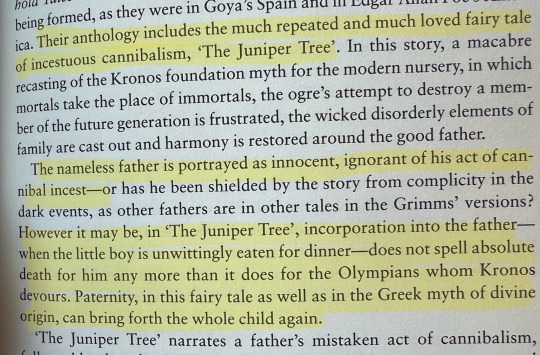
Marina Warner, No Go The Boogeyman
12 notes
·
View notes
Text

Björk Bootleg Tee
#t shirt#black#jumbo print#bjork#music#björk#iceland#icelandic#army of me#it’s oh so quiet#jóga#bachelorette#venus as a boy#hyperballad#losss#come to me#human behaviour#alternative music#electronic music#experimental music#pagan poetry#possibly maybe#big time sensuality#stonemilker#Reykjavík#The Juniper Tree#Guðmundsdóttir#Homogenic#Vespertine
11 notes
·
View notes
Note
What if Disney adapted The Juniper Tree?
Honestly, to adapt a fairy tale that hinges so heavily on child murder, cannibalism, and matricide, I think Disney would have to go all the way back to its (sometimes deeply uncomfortable) animated fairy tale roots: Silly Symphonies.
An approach like with Babes in the Wood and The Big Bad Wolf:


If they dwelt really strongly on how sad the father is, how good the sister and brother, how evil the (step)mother, and how perfectly happy the ending, it might work.
But really, this is a horror story. No matter how decidedly it ends with the note that "all three were very happy" this story begins and ends with death. I suppose you could make a purposefully dark adaptation for adults that dwells on these aspects, but...doesn't sound like a great time.
Weirdly enough I rather liked this story as a kid! I had it on a casette. The bit where the magical bird goes "I do not sing twice for nothing!" and is given the little red shoes in return for singing again was my favourite. That's a very sweet image, isn't it? Pity about all the murder
#disney goggles#the juniper tree#a very peculiar fairy tale#my sister never liked me listening to it
19 notes
·
View notes
Text
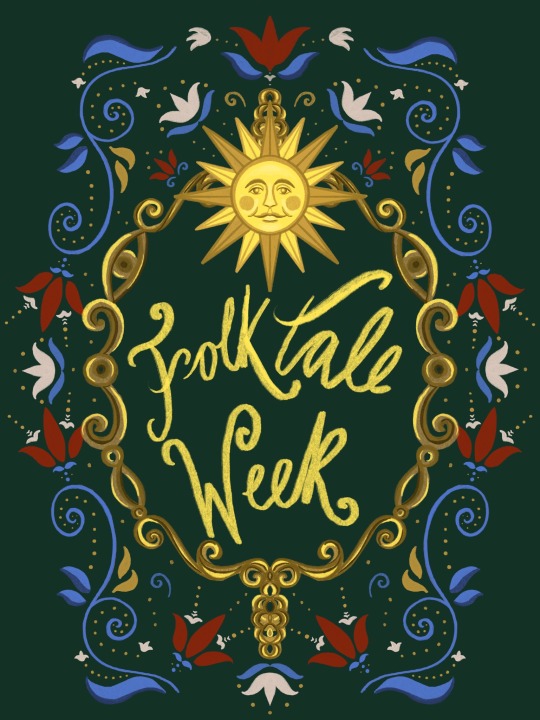
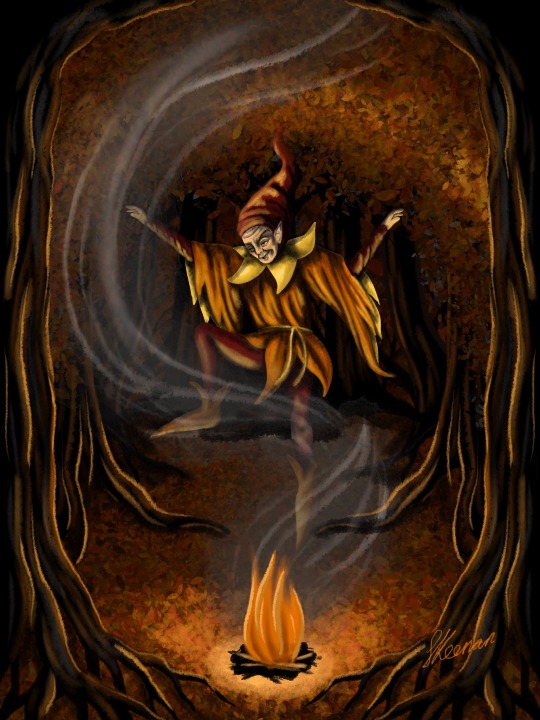
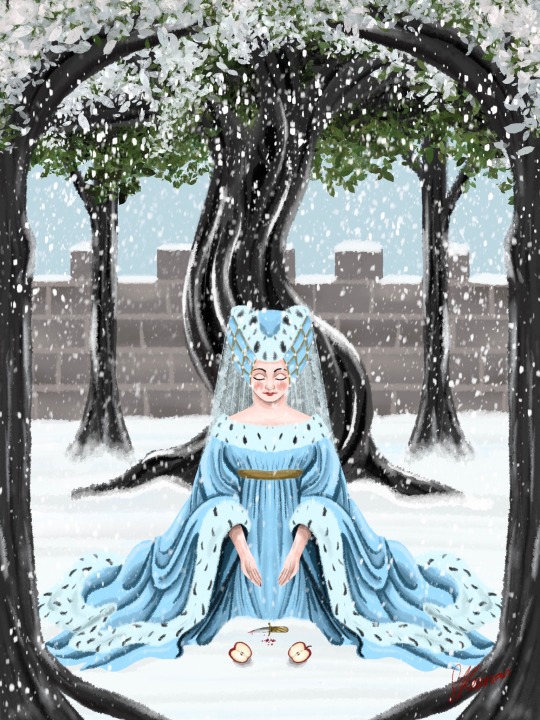


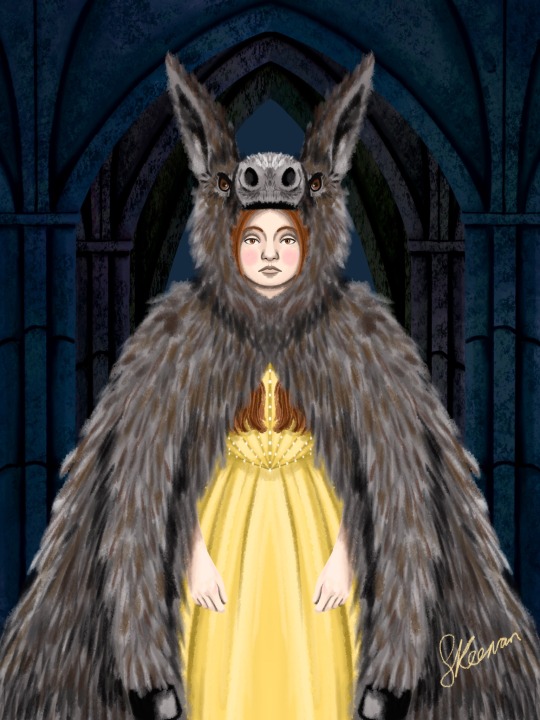


My Folktale Week 2022 collection. Rumpelstiltskin, The Juniper Tree, Stardust, Bluebeard, Donkeyskin, The Little Mermaid and Cinderella.
Scott Keenan, 2023
#folktaleweek#folktale week#bluebeard#rumpelstiltskin#the juniper tree#stardust#donkeyskin#the little mermaid#cinderella#illustration#art#artists on tumblr#digital illustration#digital art#fantasy#fairy tale#book illustration#charles perrault#brothers grimm#procreate#procreate art#scott keenan illustration#scott keenan
22 notes
·
View notes
Text
#polls#fairy tales#folklore#east of the sun west of the moon#the three ridiculous wishes#the fisherman and his soul#the juniper tree#sassi punnhun#the adventures of covan the brown haired#the canary prince#the magic lotus lantern#how the dragon was tricked
20 notes
·
View notes
Text


"the juniper tree" as told in the grimms' nursery and household tales, translated by d.l. alishman | "up the wolves", the mountain goats
#it speaks!#go here .. like you know? you see how it has to be beautiful? you see how beauty does not guarantee action?#fairy tales#web weaving#and the forest never ends#the juniper tree#the mountain goats
5 notes
·
View notes
Text
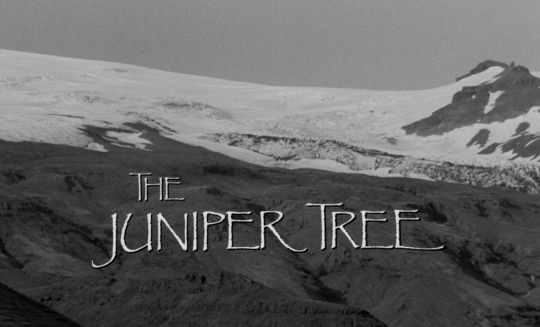



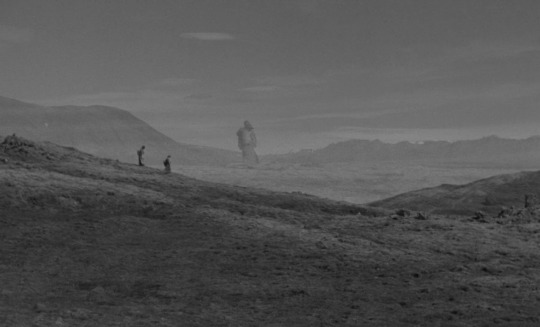





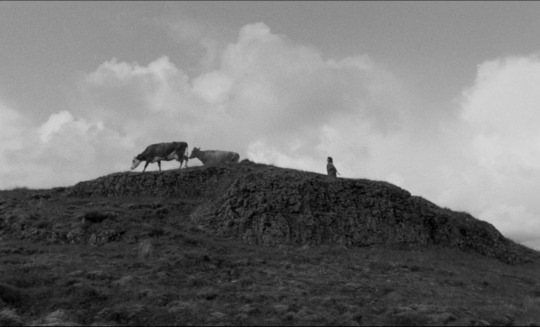




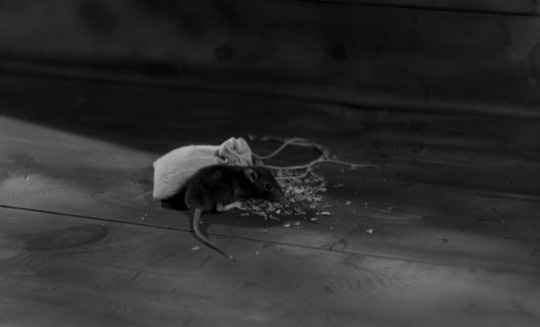






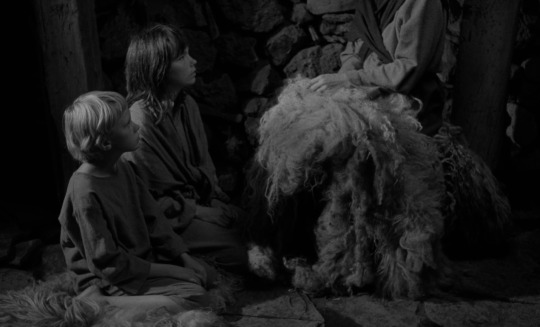



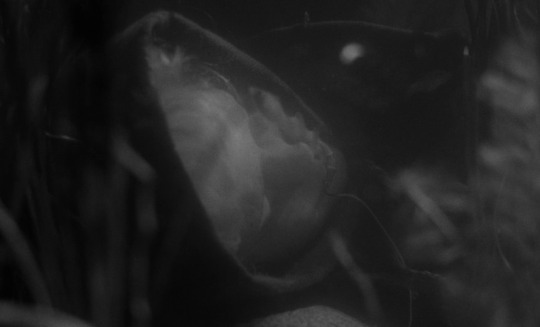

2 notes
·
View notes
Text

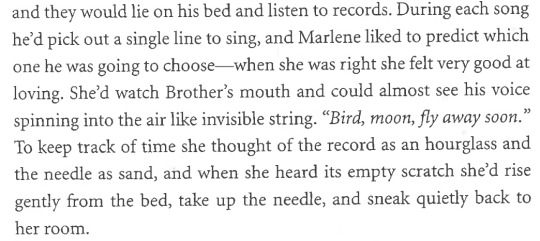
"the brother and the bird" - alissa nutting
5 notes
·
View notes
